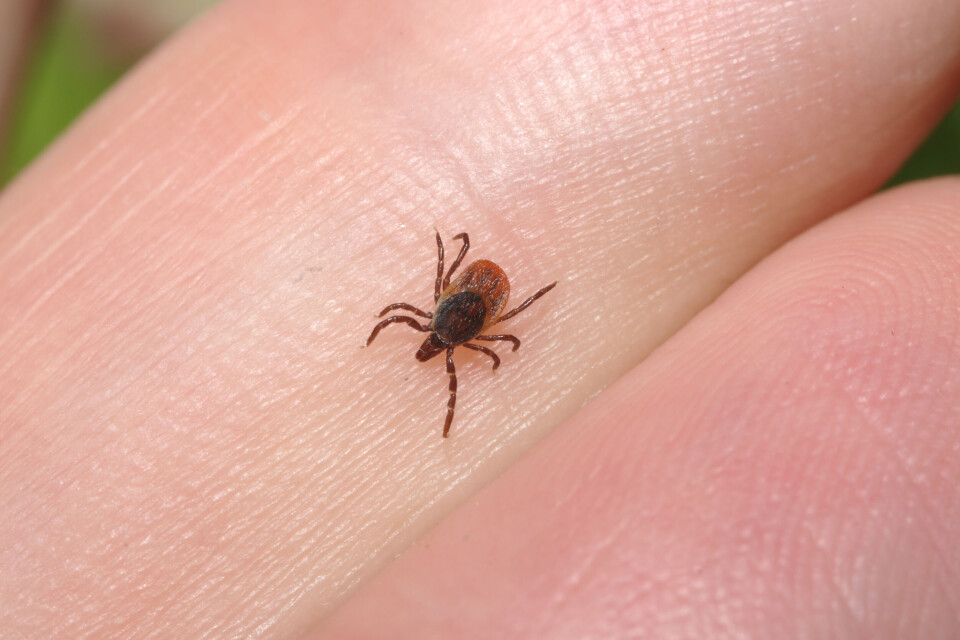-
Exemption from fees to register electric car to end across most of France from May
Applying for a carte grise will soon become more expensive
-
Why you may see a low-flying helicopter near you in west France
Residents of the Loire-Atlantique region may spot the aircraft until at least the end of May
-
Proposal to end 10% tax allowance for retirees in France: Key points
The idea - which has been suggested as a way to reduce the 5.8% budget deficit - is being hotly debated
French health experts fear spread of potentially deadly tick
A national surveillance system should be put in place to monitor the Hyalomma tick, they say. Deaths have been recorded in Spain from a condition caused from a bite

A tick that can spread deadly Crimean-Congo haemorrhagic fever (CCHF) is likely to become more common in France, health authority Anses has warned.
The condition, which the World Health Organization states has a 10-40% mortality rate, is a virus typically spread by ‘Hyalomma’ ticks. It is already common in Africa, the Balkans, the Middle East, and Asia.
No cases have yet been detected in France, but Spain has recorded several ‘native’ cases each year since 2013, with some deaths. ‘Native’ means that the cases came from within Spain, and were not only identified in people who had travelled to a recognised at-risk zone.
National health and environment agency l’Agence nationale de sécurité sanitaire de l’alimentation, de l’environnement et du travail (Anses) issued the alert on Thursday (June 1).
Climate change spread
Anses said that three species of the Hyalomma tick have been present in the south of France since 2015 and in Corsica for several decades, but climate change makes their expansion across the country more probable.
Elsa Quillery, Anses scientific coordinator, said: “Hyalomma ticks like dry climates and warm periods. This is why, in France, they are most commonly found in the scrubland or undergrowth around the Mediterranean, unlike other ticks, which tend to be found in forests.”
Read more: MAP: See the areas of France that suffer most from ticks
National surveillance
The agency is now calling for a national surveillance system to be put in place.
This would include prioritising zones identified as high-risk, and developing tools to detect the ticks - and the diseases they carry - early on. Anses also said that more research is needed on the virus.
How to prevent tick bites
CCHF causes flu-like symptoms, including high fever, shivering, cough, muscle and joint pain, fatigue, and digestive issues. In some cases, it can cause haemorrhage (heavy bleeding).
There have been increased campaigns to raise awareness of ticks and tick bites in France in recent years, especially due to another kind of tick, the Ixodes ricinus, which can carry Lyme disease.
Read more: Lyme disease in France: Official advice on how to avoid a tick bite
Tips for avoiding Hyalomma ticks include the following advice:
- Wear closed-in shoes and clothes that cover your skin
- Wear light-coloured clothes so it is easier to see if any ticks are present
- Avoid walking in the middle of long grass, in scrubland, or under low branches
- Once back home - and even if you have only been in your own garden - check your body and clothes, especially in creases (like elbows and behind knees), and in your hair
- If you find a tick, take it out immediately. You can buy tick-removal tools, which make it easier to remove the tick without squashing it. You can also use tweezers or your nails, to take out the tick without breaking its head off or squashing it (which can make a bite worse)
- Disinfect the bite, and keep watch on it for the next few days
- Lyme disease bites can form a circular ‘bullseye’ rash, and CCHF usually brings on symptoms within a few days.
If you experience symptoms of any kind after a suspected tick bite, consult a doctor as soon as possible and let them know of your tick concerns.
Related articles
Where in France you are most at-risk from Lyme disease ticks
Lyme disease: Number of people bitten by a tick rising in France
Lyme disease: How to minimise risk of ticks in your garden in France
























